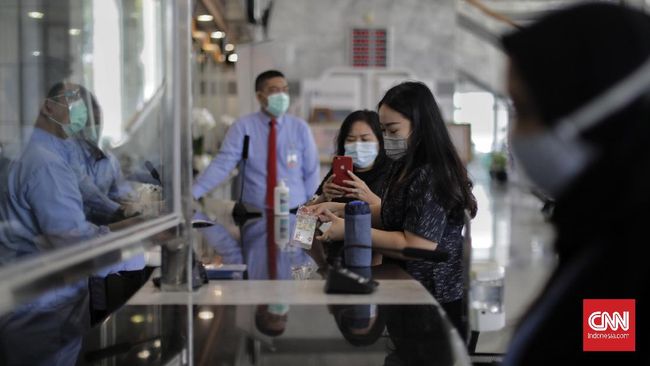Jakarta, CNN Indonesia —
Bank Indonesia (BI) revealed that many upper-middle class people disbursed storage area they are in banking. Instead, they transferred assets by investing in debt securities, including stocks in the era of the covid-19 pandemic.
This fact was conveyed by the Assistant Governor and Head of the BI Macroprudential Policy Department, Juda Agung, when he spoke with the media virtually, Friday (2/7).
According to Juda, this happened because the upper middle class wanted a higher return on investment to increase their financial coffers.
“They want to adjust (adjust) to instruments with higher returns. Hopefully, if they get high yields, when the economy is improving, they can have higher wealth and consumption can increase,” said Juda.
The national central bank recorded a maximum return of State Securities (SBN) of 8.53 percent in 2020-2021. While the average yield is now in the range of 6.35 percent in 2021.
Meanwhile, the maximum stock return reaches 66.6 percent in 2020-2021. Meanwhile, the average stock return is now around 24.6 percent in January-June 2021.
The promised yields on both instruments are much higher than for bank deposits. It is noted that the maximum return on deposits is only 6.77 percent in 2020-2021 and the average deposit interest is now 5.23 percent in 2021.
“In fact, with the current Covid-19, the interest rate on bank deposits is only 3 percent,” he added.
Even so, Juda is not sure how many upper middle class people have left deposit ownership and moved to debt securities and stocks. On the other hand, the number of investor identity numbers (SID) in the capital market continues to increase.
In 2019, the number was 2.48 million, then it rose to 3.88 million in 2020 and increased again to 5.32 million in May 2021.
Juda saw that this phenomenon could actually continue in the future, but would also be influenced by several factors. First, the level of community mobility in the era of the COVID-19 pandemic.
If mobility can increase, it is not impossible that investment instruments will be disbursed for consumption and vice versa. Second, the deposit interest rate, if it continues to be low or even drops dramatically, people will prefer to place their funds in other instruments.
Furthermore, Juda said that the upper middle class not only shifted their investment from deposits to debt securities and stocks, but also disbursed their deposits to go into bank savings which can be withdrawn at any time.
He suspects this is done to facilitate the use of funds. “So they shift their financial portfolio from deposits to assets with higher returns and shift them to savings, so they are more flexible for consumption or investment,” he explained.
This, he added, made the growth of individual deposits decrease, while the growth of individual savings rose. However, there is no detailed breakdown of growth figures.
However, this condition occurs at least in the ownership of deposits and savings in the value group above Rp100 million to Rp2 billion and those above Rp2 billion.
(uli/one)
– .


